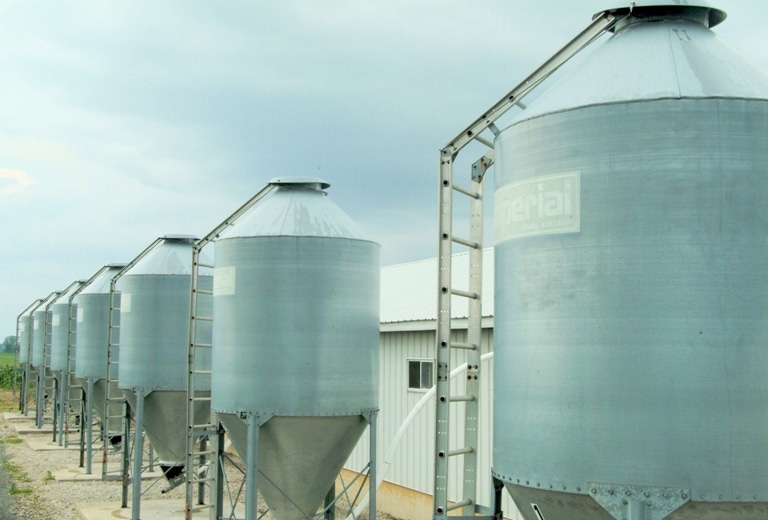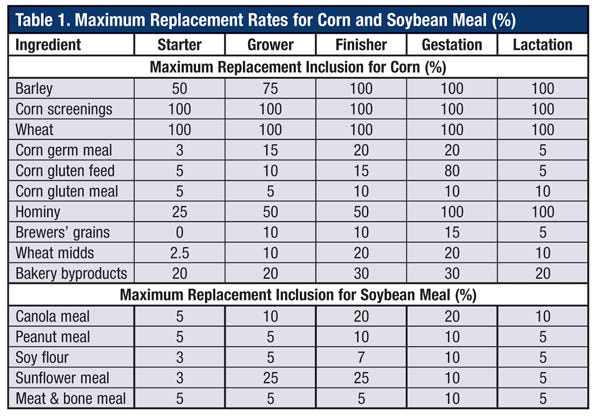Low crop yields and limited carryover stocks have pork producers scrambling to find alternative feed ingredients. When evaluating alternatives, consider freight, storage, quality and short-term vs. long-term availability.
November 15, 2012

Low crop yields and limited carryover stocks have pork producers scrambling to find alternative feed ingredients (Table 1). When evaluating alternatives, consider freight, storage, quality and short-term vs. long-term availability. Develop a plan to secure feed needs into the fall of 2013.
Plan your feed needs in each phase of production and estimate optimal output and financial efficiency. Points to consider when developing a plan:
1. Evaluate sow reproductive performance. Consider reducing sow numbers and increasing weaning age.
2. Evaluate pig birth and weaning weights. Smaller pigs typically grow slower.
3. Evaluate nursery and finish growth and efficiency. Feeding pigs longer may not pay.
4. Check for feed wastage, but don’t restrict feed flow.
5. Monitor feeding systems, especially if feeding programs change. Bridging can cause out-of-feed events that can reduce growth rates or elicit challenges in the pigs’ digestive systems.
6. Limit feed formulation changes within a grow-out period. Switching diets can change pigs’ intake patterns, growth and carcass yield.
7. Evaluate feed savings and potential impact on carcass revenue.
8. In some areas, water restrictions could extend into winter. Check water cups and nipples for proper settings. Check water pressure (about 20 lb.) or install pressure regulators. Check flow rates to be sure adequate water is reaching all pens.
9. Pigs fed high-fiber diets tend to use more water, which could affect manure storage capacity.
Short-term negatives may mean long-term positives, so weigh each decision carefully.

You May Also Like



